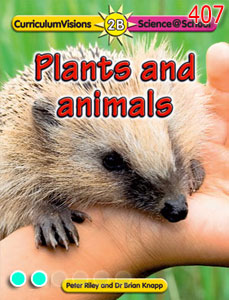Bees are social insects, which means they live and work together.
You can find bees all over the world except in Antarctica. There are over 20,000 different species (kinds) of bees, although just two are called honeybees and make nests called hives. Most bees do not produce honey.
Bees can be quite large. The world’s largest are in the tropics, and grow to nearly 5cm/2in long. However, the most common bee is quite small – smaller than our familiar honeybee. Many people mistake it for a fly. The honeybee is of middle size.
Bees have easily recognised yellow and black stripes and are fatter and hairier than wasps. As they flap their wings, they also make a low buzzing sound.
Bees are related to wasps and ants. We value bees because they pollinate flowers, and so help crops to make seeds. We also value the honey and beeswax they make. Scientists think that a third of our food depends on insect pollination, and much of that is due to the honeybee. That is why many scientists think it is so important that we do all we can to keep bee numbers high.
Bees feed on nectar and pollen from flowers. They can only feed when there are flowers. That is why you do not see them early in the year. Bees get the nectar from a flower using their long tube-like tongue, known as a proboscis.
They use nectar from flowers as a source of sweet energy. They use pollen to help build their bodies (for its protein).
Bees begin as eggs, hatch as grubs (larvae), grow fat and then change into fully-grown winged insects. Because most growing is done by the larvae, most of the nectar and pollen taken into the nests is turned into food for the larvae.
Honeybees live in colonies of tens of thousands. Each year the bees that have survived the winter begin to be active as soon as it warms up in spring.
The queen speeds up her egg laying to a peak about May. This means that the larvae will turn into adult bees just in time to coincide with the greatest amount of nectar produced by the flowers in summer.
All the time that the queen is laying eggs she produces special scents that control the behaviour of the other bees.
Bumblebees are easily told apart from honey bees. They have round bodies covered in soft hair and they are much larger.
Like their relatives the honeybees, bumblebees feed on nectar, in this case using their long hairy tongues to lap up the liquid; the tongue (proboscis) is folded under the head during flight.
Bumblebees nest in holes in the ground, often those once used by voles and other burrowing creatures. Nests are home to many fewer bees than honeybee nests (hives) - often just a couple of hundred. Inside the cells do not make a honeycomb, but are grouped without much order
People have collected and eaten honey for thousands of years.







